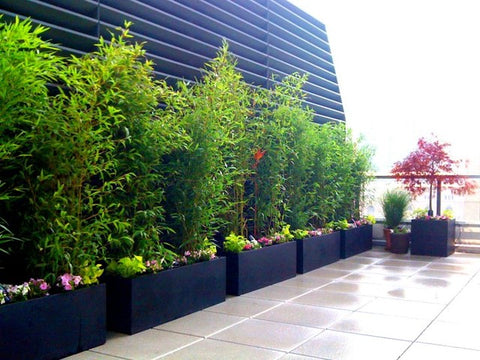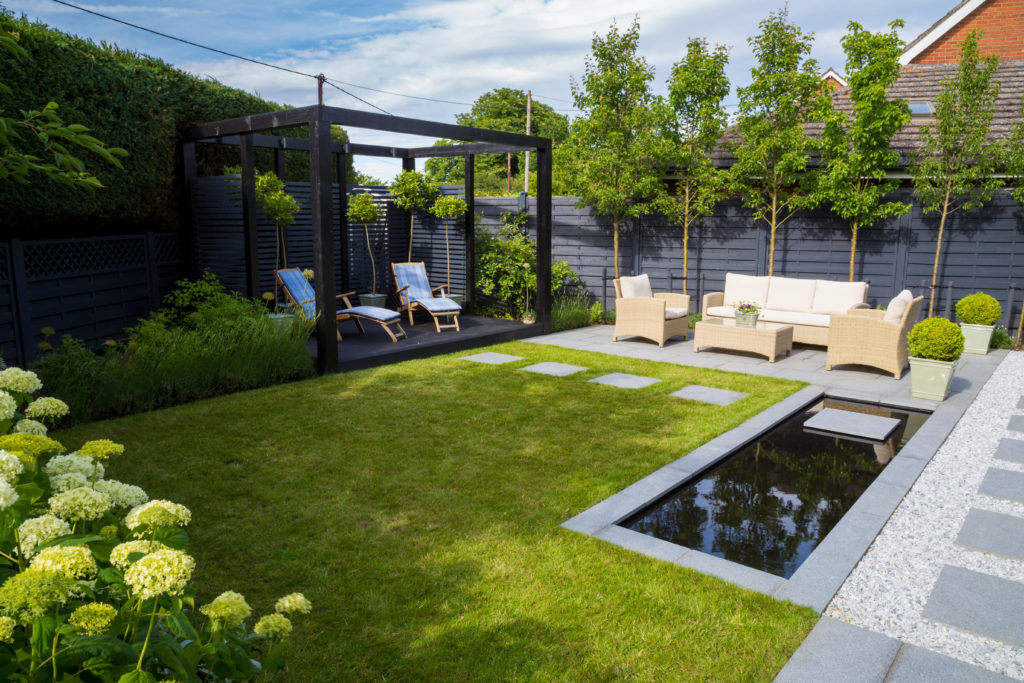Why Choose Trees in Pots for Screening?
When it comes to creating a natural screen for outdoor spaces, trees in pots for screening offer a unique combination of flexibility, ease of maintenance, and year-round interest. By using container trees, homeowners can easily move them to different locations or adjust their arrangement to suit changing needs. This versatility is particularly useful for renters or those with limited outdoor space. Moreover, trees in pots for screening require less maintenance compared to in-ground trees, as they are less prone to pests and diseases. Additionally, container trees can thrive in small spaces, making them an ideal solution for urban gardens or balconies. With proper care, trees in pots for screening can provide a beautiful and effective screen, blocking unwanted views, reducing noise pollution, and creating a sense of privacy and seclusion.
Selecting the Right Tree Species for Your Screen
When it comes to choosing a tree species for screening, there are several key factors to consider. One of the most important is growth rate, as a fast-growing tree can quickly provide the desired level of screening, while a slow-growing tree may take longer to achieve the same effect. Mature size is also crucial, as a tree that grows too large can become difficult to maintain in a container, while a tree that remains too small may not provide adequate screening. Foliage density is another important consideration, as a tree with dense foliage can provide a more effective screen than one with sparse foliage. Additionally, factors such as climate tolerance, soil preferences, and pest resistance should also be taken into account when selecting a tree species for screening. By carefully considering these factors, homeowners can choose a tree species that is well-suited to their specific needs and will thrive in a container, providing a beautiful and effective screen for years to come.
How to Create a Lush and Effective Screen with Container Trees
To create a lush and effective screen with container trees, it’s essential to consider several key factors. One of the most critical is pot size, as a tree’s root system needs sufficient room to grow and thrive. A general rule of thumb is to choose a pot that is at least 1-2 sizes larger than the tree’s current root ball. Soil quality is also crucial, as a well-draining potting mix can help prevent waterlogged soil and root rot. In terms of watering schedules, it’s essential to strike a balance between providing enough moisture and avoiding over-watering, which can be detrimental to the tree’s health. Additionally, regular fertilization and pruning can help promote healthy growth and maintain the desired shape and size of the tree. By following these tips and techniques, homeowners can create a stunning and effective screen with trees in pots for screening, providing a beautiful and functional solution for outdoor spaces.
Top Tree Species for Screening in Pots
When it comes to choosing the right tree species for screening in pots, there are several top contenders to consider. Italian Cypress, with its slender profile and dense, dark green foliage, is a popular choice for creating a lush and effective screen. Arborvitae, with its natural conical shape and soft, scale-like foliage, is another excellent option for adding year-round interest to outdoor spaces. Leyland Cypress, with its rapid growth rate and feathery, soft foliage, is ideal for creating a quick and effective screen. Other top tree species for screening in pots include Juniper, Holly, and Privet, each offering unique characteristics and benefits. By selecting the right tree species for their specific needs and climate, homeowners can create a stunning and functional screen with trees in pots for screening, providing a beautiful and effective solution for outdoor spaces.
Designing a Beautiful and Functional Screen with Trees in Pots
When designing a beautiful and functional screen with trees in pots, there are several key considerations to keep in mind. First, consider the space where the screen will be placed, taking into account the available room, sunlight, and wind direction. Next, think about the style and aesthetic you want to achieve, whether it’s modern and sleek or traditional and rustic. Budget is also an important factor, as it will influence the type and number of trees, as well as the size and material of the pots. Additionally, consider the level of maintenance you’re willing to commit to, as some tree species require more care than others. By taking these factors into account, homeowners can create a stunning and effective screen with trees in pots for screening, providing a beautiful and functional solution for outdoor spaces. For example, a row of Italian Cypress trees in pots can create a sleek and modern screen, while a grouping of Arborvitae trees in pots can add a touch of rustic charm. By choosing the right tree species, pot size, and design layout, homeowners can create a screen that not only provides privacy and concealment but also adds beauty and value to their outdoor space.
Common Mistakes to Avoid When Using Trees in Pots for Screening
When using trees in pots for screening, there are several common mistakes to avoid in order to ensure optimal performance and longevity. One of the most critical mistakes is under-watering, which can lead to stress, disease, and pest issues. Over-pruning is another common error, as it can cause trees to become stressed and vulnerable to disease. Neglecting soil quality is also a mistake, as poor soil can lead to nutrient deficiencies and root problems. Additionally, failing to provide adequate fertilization, pruning, and pest management can compromise the health and effectiveness of the screen. Furthermore, selecting tree species that are not well-suited to the local climate or soil conditions can lead to poor growth and performance. By avoiding these common mistakes, homeowners can create a thriving and effective screen with trees in pots for screening, providing a beautiful and functional solution for outdoor spaces. By taking the time to properly care for and maintain their container trees, homeowners can enjoy a stunning and effective screen that provides privacy, concealment, and beauty for years to come.
Container Tree Care and Maintenance for Optimal Screening
To ensure optimal performance and longevity of trees in pots for screening, regular care and maintenance are essential. Fertilization is a critical aspect of container tree care, as it provides essential nutrients for healthy growth and development. A balanced, slow-release fertilizer should be applied according to the manufacturer’s instructions to promote robust growth and foliage density. Pruning is another crucial maintenance task, as it helps maintain the desired shape and size of the trees, promotes healthy growth, and encourages dense foliage. Pruning should be done regularly, ideally during the dormant season, to minimize stress and prevent disease. Pest management is also vital, as pests can quickly damage trees in pots and compromise their effectiveness as a screen. Regular monitoring for signs of pests, such as spider mites, mealybugs, and scale, and prompt treatment with organic or chemical controls can help prevent infestations. Additionally, regular watering schedules, potting mix maintenance, and protection from extreme weather conditions can help ensure the health and vitality of trees in pots for screening. By following these care and maintenance guidelines, homeowners can create a stunning and effective screen with trees in pots that provides beauty, privacy, and functionality for years to come.
Bringing it All Together: Creating a Stunning Screen with Trees in Pots
In conclusion, creating a stunning screen with trees in pots for screening requires careful planning, selection, and maintenance. By choosing the right tree species, selecting the appropriate pot size and soil quality, and providing regular care and maintenance, homeowners can create a beautiful and functional screen that provides privacy, concealment, and year-round interest. It is essential to avoid common mistakes, such as under-watering, over-pruning, and neglecting soil quality, and instead focus on providing optimal growing conditions for the trees. By following the guidelines outlined in this article, homeowners can create a lush and effective screen with trees in pots that enhances their outdoor space and provides a unique solution for screening. Whether used to conceal unsightly views, create privacy, or add beauty and functionality to a patio or deck, trees in pots for screening offer a versatile and effective solution that can be tailored to meet individual needs and styles. With the right approach, trees in pots for screening can become a stunning focal point in any outdoor space, providing beauty, functionality, and enjoyment for years to come.


/GettyImages-492792825-577fbe1a5f9b5831b5508c3e.jpg)






